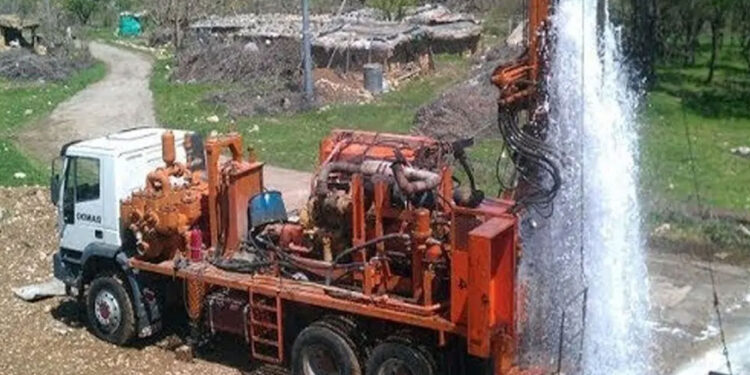Karachi, Pakistan’s sprawling metropolis and home to over 20 million residents, is in the throes of a severe water crisis, exacerbated by a staggering demand-supply gap. Currently, the city’s water supply stands at approximately 550 million gallons per day (MGD), woefully insufficient against a demand exceeding 1200 MGD. This crisis stems from a multitude of factors including mismanaged sewage systems, urban overcrowding, inadequate infrastructure, and the impacts of climate change.
The Origins of Karachi’s Water Crisis
Mismanaged Sewage Systems
One of the critical factors contributing to Karachi’s water woes is the mismanagement of sewage systems. The city’s sewage system, plagued by outdated infrastructure and lack of maintenance, results in significant water loss and contamination.
Urban Overcrowding
With a population exceeding 20 million, urban overcrowding strains Karachi’s already limited water resources. The rapid influx of people has led to uncontrolled urban sprawl, further complicating water distribution efforts.
Inadequate Infrastructure
Karachi’s inadequate infrastructure hampers efficient water distribution. Aging pipelines and insufficient water treatment facilities exacerbate the supply-demand gap, leaving many residents without reliable access to clean water.
Climate Change Impact
Climate change is another pivotal factor intensifying Karachi’s water crisis. Irregular rainfall patterns and prolonged droughts reduce the availability of surface water, forcing the city to rely heavily on groundwater resources.
Groundwater Boring: A Vital Solution
What is Groundwater Boring?
In response to the acute water shortage, Karachi’s residents are increasingly turning to groundwater extraction, commonly known as water boring. This method involves drilling deep into the earth’s surface to tap into aquifers that store groundwater.
The Process of Groundwater Boring
Groundwater boring involves several steps, starting with site selection and drilling, followed by the installation of casing and screens to support the borehole and prevent contamination. Once the borehole is complete, a pump is installed to extract the groundwater.
Cost Factors of Groundwater Boring
The cost of groundwater boring varies significantly based on the depth and diameter of the bore. For an 8-inch diameter bore, the current rates stand at Rs. 600 per foot for the first 600 feet, increasing to Rs. 800 per foot for depths ranging from 600 to 800 feet, and further rising to Rs. 1,000 per foot for depths between 800 to 1,000 feet. The expenses escalate if the bore diameter expands to 12 or 15 inches, reflecting the complexity and resources required for deeper drilling.
Economic Implications of Groundwater Boring
Affordability for Residents
The high cost of groundwater boring raises concerns about affordability for Karachi’s residents. Many households may find it financially challenging to invest in such solutions, prompting a need for government subsidies or alternative funding mechanisms.
Long-term Sustainability
While groundwater boring offers a temporary solution, its long-term sustainability is questionable. Over-extraction of groundwater can lead to the depletion of aquifers, land subsidence, and increased salinity, ultimately exacerbating the water crisis.
Environmental Concerns
Aquifer Depletion
Excessive groundwater extraction poses a significant risk of aquifer depletion. As more water is pumped out than is naturally replenished, the water table drops, leading to a decline in groundwater levels.
Land Subsidence
Land subsidence is another consequence of over-extraction, where the ground sinks due to the removal of water from underground aquifers. This can damage infrastructure and reduce the land’s capacity to store water.
Increased Salinity
In coastal areas like Karachi, increased salinity in groundwater is a major concern. As freshwater is extracted, saltwater from the sea can intrude into aquifers, making the water unsuitable for drinking and irrigation.
Future Outlook and Considerations
Projected Demand for Groundwater Boring
As Karachi continues to grapple with its water woes, the demand for groundwater boring is projected to surge. This trend underscores the urgent need for sustainable water management practices.
Addressing Underlying Causes
Addressing the underlying causes of the water crisis is crucial for long-term water security. This includes improving urban planning, investing in modern infrastructure, and implementing effective sewage management systems.
Government and Community Role
Both the government and the community play a vital role in mitigating Karachi’s water crisis. Government policies should focus on sustainable water use, while community awareness programs can encourage conservation practices and reduce wastage.
Conclusion
Amidst the challenges posed by rapid urbanization and environmental pressures, the rising costs of groundwater extraction highlight both the urgency and complexity of Karachi’s water crisis. While groundwater boring provides a temporary solution, it is not without its drawbacks. Residents are urged to weigh these financial considerations against the broader implications of unsustainable water practices. Emphasizing the need for comprehensive solutions, it is imperative to address the root causes of the crisis to ensure a sustainable water future for all Karachiites. Investing in improved infrastructure, promoting efficient water management practices, and fostering community involvement are essential steps toward securing a reliable and sustainable water supply for Karachi.








